Social media has transformed the marketing landscape, becoming an essential tool for businesses to reach and engage with their audiences. With billions of users across multiple platforms, social media offers unparalleled opportunities for brand visibility, customer engagement, and conversion. This blog explores the rise of social media marketing, highlights key platforms, and outlines strategies for businesses to maximize their impact in the digital age.
The Evolution of Social Media Marketing
Social media marketing has rapidly evolved over the past two decades. Initially, platforms like Facebook and MySpace served primarily as social networking tools for individuals. However, as their user bases grew, businesses recognized the potential to leverage these platforms to connect with consumers. What started as a simple way to share updates has now become a sophisticated marketing ecosystem that allows for targeted advertising, influencer partnerships, customer service, and brand community building.
Key reasons behind the growth of social media marketing include:
- Increased Global Reach: With over 4.5 billion social media users worldwide, platforms offer businesses access to a massive global audience.
- Targeted Advertising: Social media platforms provide granular targeting options based on demographics, interests, behaviors, and even purchase intent, allowing for highly personalized marketing efforts.
- Cost-Effective Campaigns: Social media marketing allows businesses, especially small-to-medium enterprises (SMBs), to run budget-friendly campaigns with measurable returns.
- Interactive Engagement: Social media enables two-way communication between brands and customers, fostering relationships, trust, and loyalty.
Key Social Media Platforms
There are numerous social media platforms that businesses can utilize, each with unique features and audiences. Understanding the strengths of each platform is crucial to building an effective social media marketing strategy.
1. Facebook
As one of the largest social media platforms, Facebook continues to be a powerful marketing tool. With over 2.9 billion monthly active users, it provides extensive advertising options and robust targeting capabilities.
- Key Features:
- Facebook Ads: Targeted campaigns using detailed demographic, geographic, and interest-based data.
- Facebook Groups: A great way to build communities around your brand.
- Facebook Marketplace: Ideal for e-commerce brands looking to sell directly on the platform.
- Best for: B2C and B2B businesses, community-building, targeted ad campaigns, e-commerce.
2. Instagram
Owned by Facebook, Instagram has become a visual-first platform popular with younger demographics. It is particularly effective for businesses in fashion, beauty, food, and lifestyle industries.
- Key Features:
- Instagram Stories: Short-lived content that can drive high engagement.
- Instagram Shopping: Allows businesses to tag products in posts, making it easy for users to purchase.
- Influencer Marketing: Collaborating with influencers for sponsored posts or takeovers.
- Best for: Visual brands, influencer marketing, direct-to-consumer (DTC) businesses, lifestyle brands.
3. Twitter
Twitter is a fast-paced platform where brands can engage with users in real-time. Known for its brevity, it’s a great channel for sharing news, participating in conversations, and responding to customer inquiries.
- Key Features:
- Hashtag Campaigns: Businesses can create branded hashtags to increase visibility and user-generated content.
- Twitter Ads: Promoted tweets and trends to drive engagement and awareness.
- Customer Service: An ideal platform for quick and efficient customer service responses.
- Best for: Real-time engagement, customer service, news, and updates.
4. LinkedIn
LinkedIn is the premier platform for B2B marketing, connecting professionals across industries. It’s the go-to place for networking, recruiting, and establishing thought leadership.
- Key Features:
- LinkedIn Ads: Target professionals based on job title, company, industry, and seniority.
- LinkedIn Articles: Allows brands to share long-form content and thought leadership.
- LinkedIn Groups: Community engagement through professional groups.
- Best for: B2B marketing, lead generation, professional services, thought leadership.
5. TikTok
TikTok is a rapidly growing platform known for short-form video content. It’s popular with Gen Z and offers a unique opportunity for brands to create viral content and engage with younger audiences.
- Key Features:
- TikTok Challenges: Encourages user participation through branded challenges.
- TikTok Ads: In-feed ads and branded hashtags allow for creative ad campaigns.
- Influencer Collaborations: Partnering with influencers for authentic content creation.
- Best for: Brands targeting Gen Z, creative industries, viral marketing, influencer collaborations.
6. YouTube
As the second-largest search engine, YouTube is essential for brands investing in video content marketing. It’s an ideal platform for educational content, product demonstrations, and vlogs.
- Key Features:
- YouTube Ads: Skippable and non-skippable ads, as well as banner ads.
- Long-Form Video Content: Great for tutorials, product reviews, and storytelling.
- YouTube Shorts: Short video content to compete with TikTok and Instagram Reels.
- Best for: Video content, tutorials, product demonstrations, educational content.
Effective Social Media Marketing Strategies
To succeed in social media marketing, businesses need to adopt thoughtful strategies that align with their goals and audience preferences. Here are key strategies that can enhance the effectiveness of social media campaigns:
1. Define Clear Objectives
Before diving into social media marketing, it’s essential to set specific goals. Whether you’re aiming to increase brand awareness, drive website traffic, generate leads, or improve customer engagement, having clear objectives will guide your strategy and help measure success.
2. Know Your Audience
Understanding your audience is crucial for creating content that resonates. Conduct market research to identify your target audience’s preferences, pain points, and behaviors. Use social media analytics tools to gain insights into your followers’ demographics, interests, and engagement patterns.
3. Develop a Content Strategy
A well-defined content strategy is the backbone of successful social media marketing. Create a content calendar that includes a mix of content types, such as:
- Educational content: How-tos, tutorials, and industry insights.
- Entertaining content: Memes, challenges, and interactive polls.
- Promotional content: Special offers, product launches, and sales.
- User-generated content: Showcase reviews, testimonials, and customer stories.
Consistency is key, so ensure that your posting frequency aligns with your audience’s activity levels on each platform.
4. Use Data-Driven Advertising
Social media platforms offer highly targeted advertising options that can help you reach specific audiences. Leverage the detailed targeting features of platforms like Facebook, Instagram, and LinkedIn to deliver personalized ads that align with your audience’s interests and behaviors.
5. Engage with Your Audience
Social media is not just a one-way communication channel—it’s an opportunity to build relationships. Actively engage with your followers by responding to comments, answering questions, and participating in conversations. Use social listening tools to monitor mentions of your brand and industry trends, and participate in relevant discussions.
6. Collaborate with Influencers
Influencer marketing has become one of the most effective ways to reach niche audiences. Partner with influencers who align with your brand values and have a strong connection with their followers. Micro-influencers, in particular, can provide highly targeted engagement at a lower cost.
7. Leverage User-Generated Content
Encouraging your customers to share their experiences with your brand on social media can amplify your reach and build trust. Reposting user-generated content (UGC) not only fills your content calendar but also acts as social proof, showing potential customers that your brand is credible and popular.
8. Monitor and Adjust
Social media marketing is not a set-it-and-forget-it strategy. Continuously monitor the performance of your campaigns using platform-specific analytics tools and adjust your strategies based on real-time data. Identify what types of content perform best and replicate those strategies in future campaigns.
Conclusion
The rise of social media marketing has reshaped the way businesses communicate with their customers, providing endless opportunities for growth and engagement. With the right mix of platforms and strategies, businesses can build stronger connections with their audience, improve brand visibility, and drive measurable results. By staying informed about platform trends, understanding audience preferences, and adapting strategies based on data insights, businesses can thrive in the dynamic world of social media marketing.

